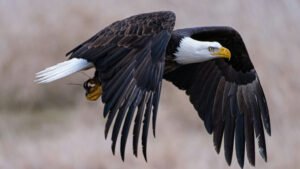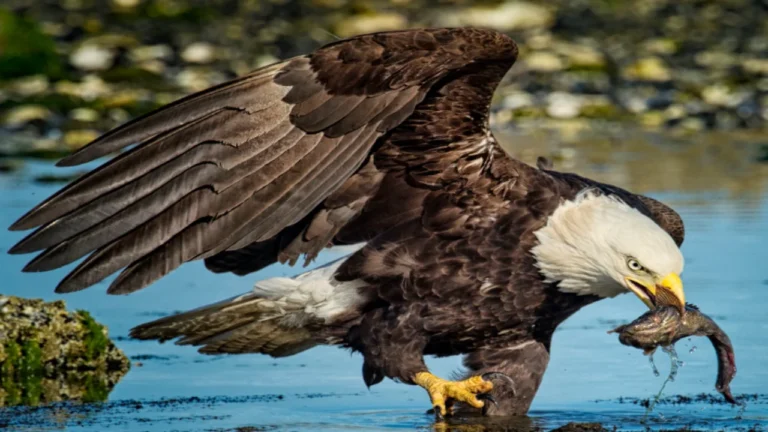Introduction to the Hancock Bird
The Hancock bird, known scientifically as Amphibiornis hancockensus, is a remarkable member of the avian family that captures the interest of ornithologists and bird enthusiasts alike. Characterized by its vibrant plumage and melodic calls, this bird possesses distinct physical traits that set it apart from other avian species. Its striking colors range from deep blues to fiery oranges, making it a visual delight in its natural habitat.
Historically, the Hancock bird inhabits a variety of ecosystems, notably favoring lush forests, wetlands, and grasslands. These environments provide ample resources for feeding, nesting, and breeding. Geographically, the Hancock bird has a wide distribution, primarily found in regions of South America and parts of Central America, encompassing both coastal and inland territories. The adaptability of the Hancock bird to these diverse habitats highlights its evolutionary success and niche specialization.
One of the most significant attributes of the Hancock bird is its role within the ecosystem. As an omnivore, it plays a crucial part in the food web, feasting on insects, seeds, and fruits. This dietary versatility allows it to thrive in various environments while also aiding in seed dispersal, thus contributing to the health of its habitat. Moreover, the Hancock bird exhibits complex social behaviors, often forming small flocks that interact in cooperative ways to protect themselves from predators.
In addition to its ecological significance, the Hancock bird has cultural implications, with local communities often celebrating its existence through folklore and conservation efforts. As research continues to unravel the mysteries surrounding this fascinating bird, it becomes clear that understanding its biology and ecological role is essential for ensuring the preservation of its populations for generations to come.
Physical Characteristics and Behavior
The Hancock bird, known for its striking physical attributes, captivates birdwatchers with its distinctive appearance and engaging behaviors. Generally, this bird measures between 8 to 12 inches in length, with a wingspan that varies from 18 to 24 inches. Its plumage exhibits a brilliant array of colors, often featuring combinations of vibrant blue, deep green, and stunning yellow, which serve not only to attract potential mates but also to camouflage it within its natural habitat.
One of the most notable features of the Hancock bird is its elongated tail adorned with intricate patterns, allowing for increased maneuverability during flight. This adaptation plays a crucial role in its hunting technique as it gracefully navigates through dense foliage. Moreover, the Hancock bird possesses a sharp, curved beak specialized for foraging, particularly adept at extracting insects from crevices in tree bark.
In terms of behavior, the Hancock bird exhibits a variety of fascinating feeding habits. Known to be primarily insectivorous, it actively hunts for a diverse range of prey, including beetles, caterpillars, and spiders. This dietary versatility highlights its adaptability, allowing the Hancock bird to thrive in various environments from lush forests to arid scrublands. Furthermore, its foraging technique often includes acrobatic maneuvers, such as hanging upside down or darting from branch to branch.
Mating rituals of the Hancock bird are equally captivating. During the breeding season, males engage in elaborate displays, characterized by song and vibrant plumage showcases, to attract females. Observations have shown that these displays can vary regionally, suggesting an incredible adaptation to local environments. Socially, the Hancock bird tends to form small flocks outside the breeding season, often cooperating to locate food sources. Their sociable nature and developed communication skills make them a fascinating subject for ornithologists and bird enthusiasts alike.

Conservation Status and Threats
The Hancock bird, a remarkable avian species, faces significant challenges that threaten its survival in the wild. Classified as vulnerable due to habitat loss, this bird relies heavily on specific ecosystems that are increasingly under threat from human activities. Urbanization, agriculture, and deforestation contribute to the degradation of its natural habitats, leading to a decline in the population of this captivating bird. The shrinking availability of suitable nesting sites and food sources has put a strain on their numbers, creating an urgent need for concerted conservation efforts.
Climate change also poses a serious risk to the Hancock bird, as shifts in weather patterns can alter its habitat and impact food availability. Altered rainfall patterns, increased temperatures, and extreme weather events can disrupt the delicate ecosystems on which these birds depend. Furthermore, pollution and pesticide usage can have detrimental effects on their food sources, ultimately diminishing the quality of their habitat.
To combat these threats, various conservation initiatives are being implemented to protect the Hancock bird and its environment. Awareness campaigns focused on preserving habitats, promoting sustainable land-use practices, and the establishment of protected areas are essential strategies in this endeavor. Additionally, collaboration with local communities fosters a sense of ownership and responsibility towards wildlife conservation.
Readers interested in contributing to the preservation of the Hancock bird can engage in various ways. Supporting conservation organizations, participating in habitat restoration projects, and advocating for biodiversity protection are effective methods to help safeguard this extraordinary species. By raising awareness of the Hancock bird’s plight and the challenges it faces, individuals can play a vital role in ensuring its survival for future generations.
How to Spot and Appreciate the Hancock Bird
For avid birdwatchers and enthusiasts, locating the elusive Hancock bird can prove to be rewarding and engaging. These striking creatures are typically found in specific habitats, primarily dense forests and areas near water bodies. Birdwatchers should consider visiting natural reserves and parks that offer these environments. Notable locations such as wetlands and wooded regions in the northeastern and southeastern United States have been documented as hotspots for Hancock bird sightings.
The ideal time for observing these birds is during the early morning or late afternoon when they are most active. During these periods, their distinct calls can often be heard, guiding eager watchers to their locations. Moreover, seasonal migrations should not be overlooked, as the Hancock bird tends to follow specific migratory routes. Observing these patterns can significantly increase the likelihood of encounters.
Equipping oneself with the proper tools can elevate the experience of watching the Hancock bird. A good pair of binoculars, with at least 8x magnification, is essential for observing these birds at a distance. Additionally, a field guide specific to local avian life can aid in identification and understanding of their behavior. Don’t forget to carry a notebook to document your findings or any remarkable encounters, as these personal reflections contribute to a deeper appreciation of avian life.
Several seasoned birdwatchers share poignant experiences that enrich the narrative surrounding the Hancock bird. One notable account tells of a serene afternoon spent in a hidden forest, where the gentle rustling of leaves gave way to the melodic call of the Hancock bird, creating an unforgettable connection with nature. Such stories foster a sense of community among those fascinated by these incredible creatures, reminding us of the beauty and serenity found in birdwatching. Embracing the thrill of the chase and sharing experiences amplifies the joy of discovering nature’s avian wonders.
May Be You Also Read
